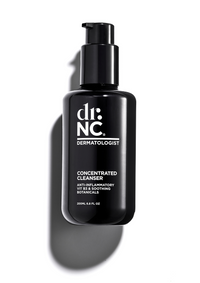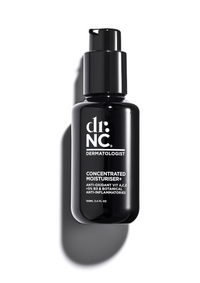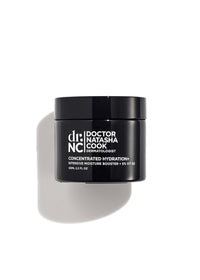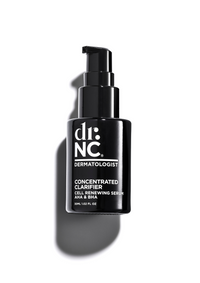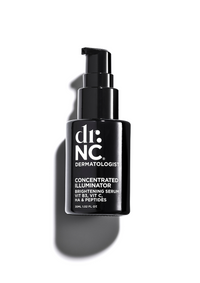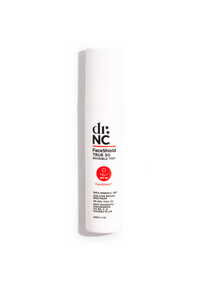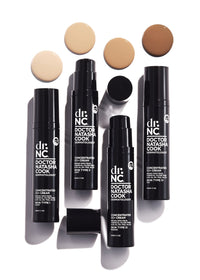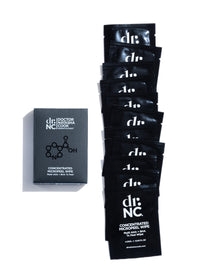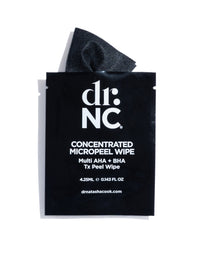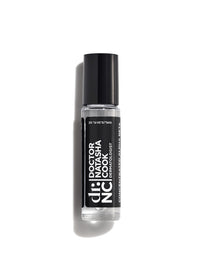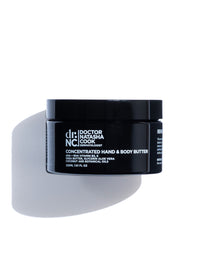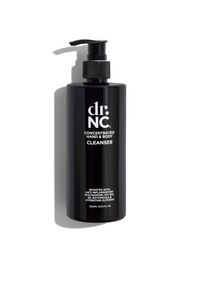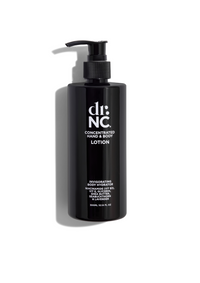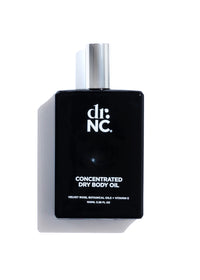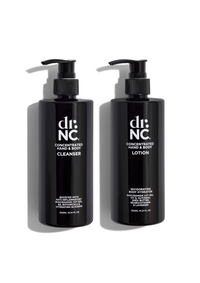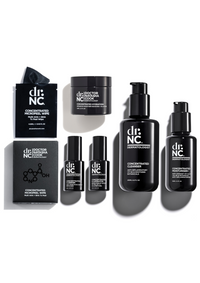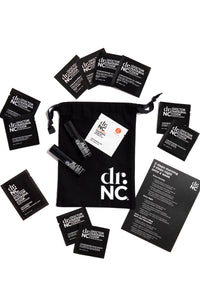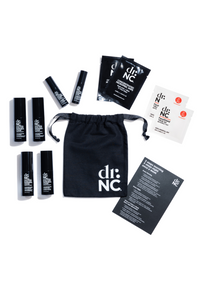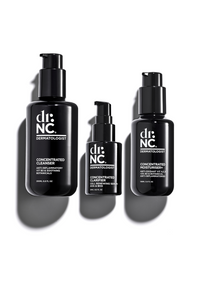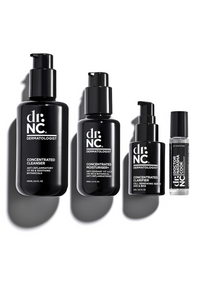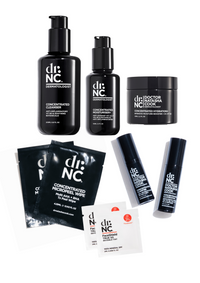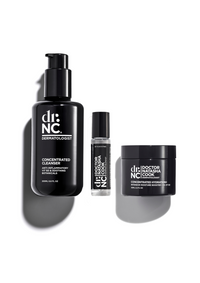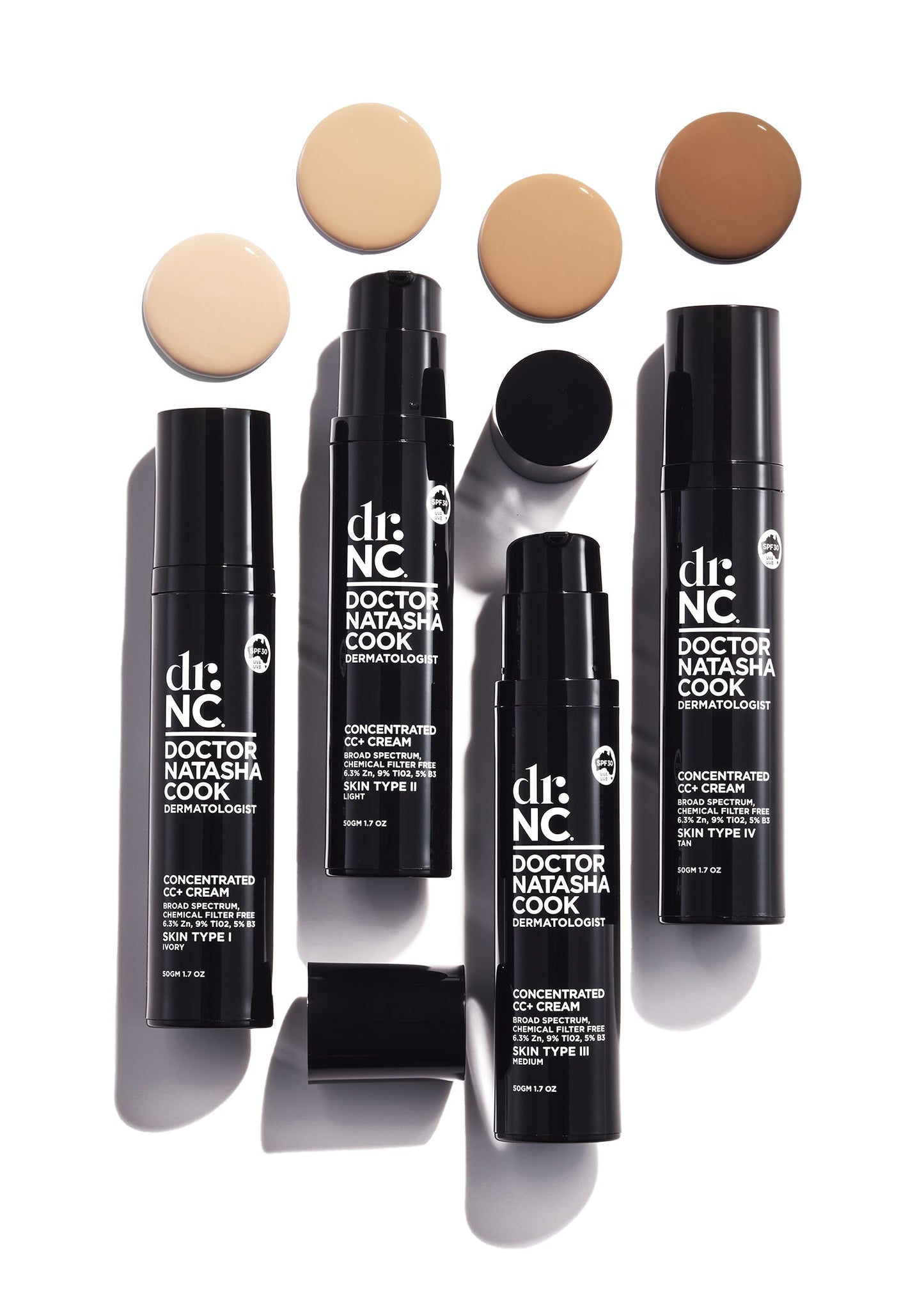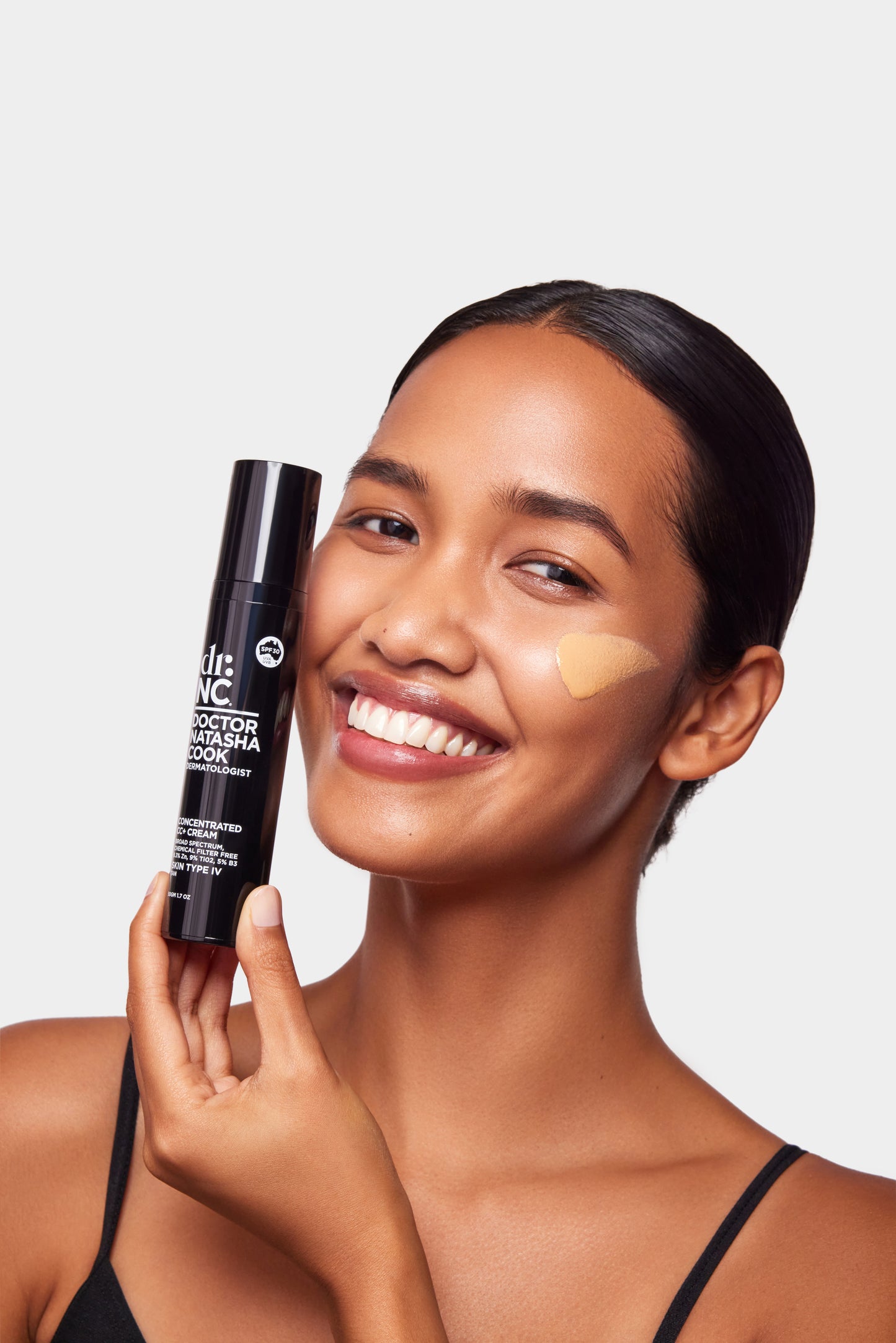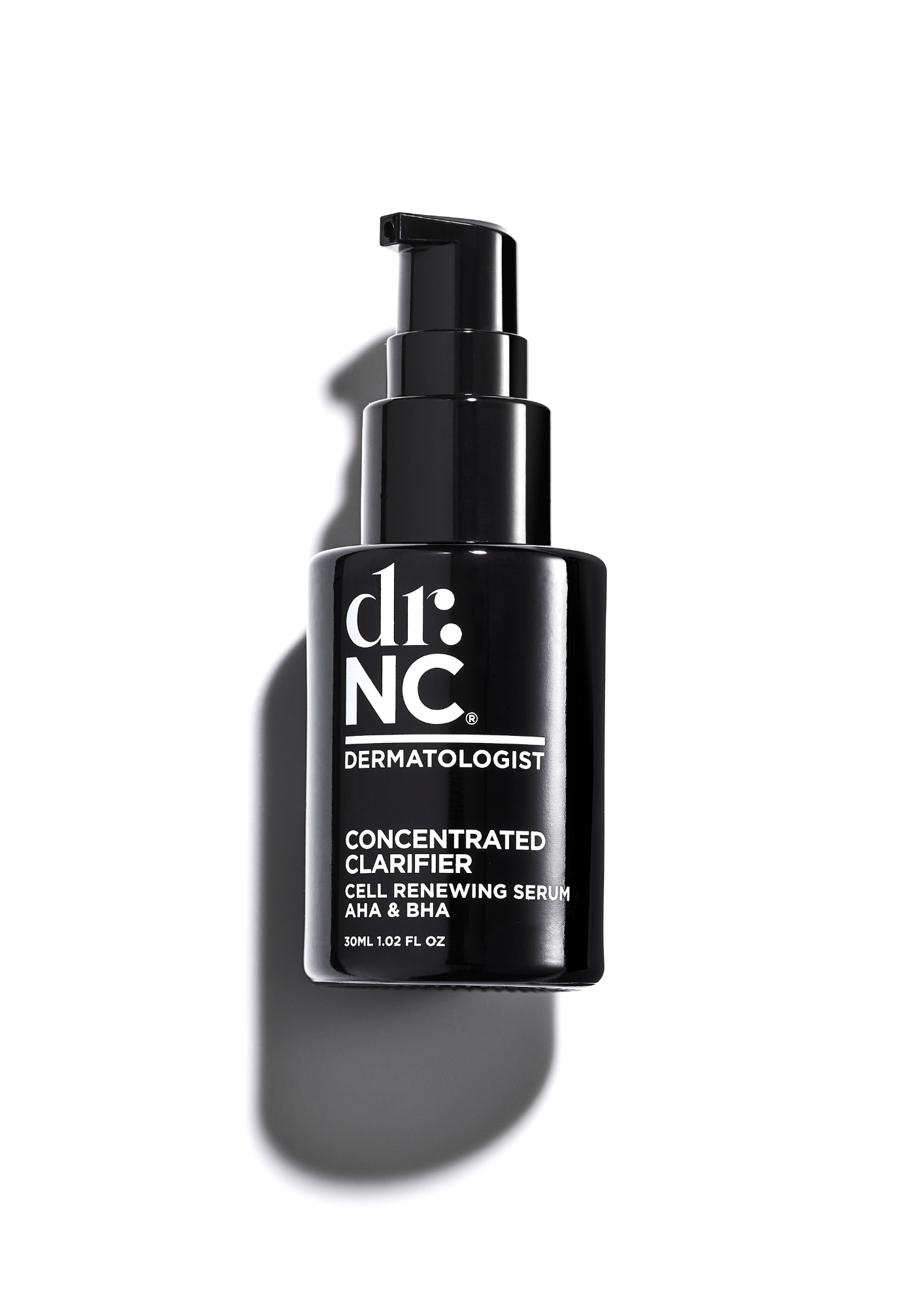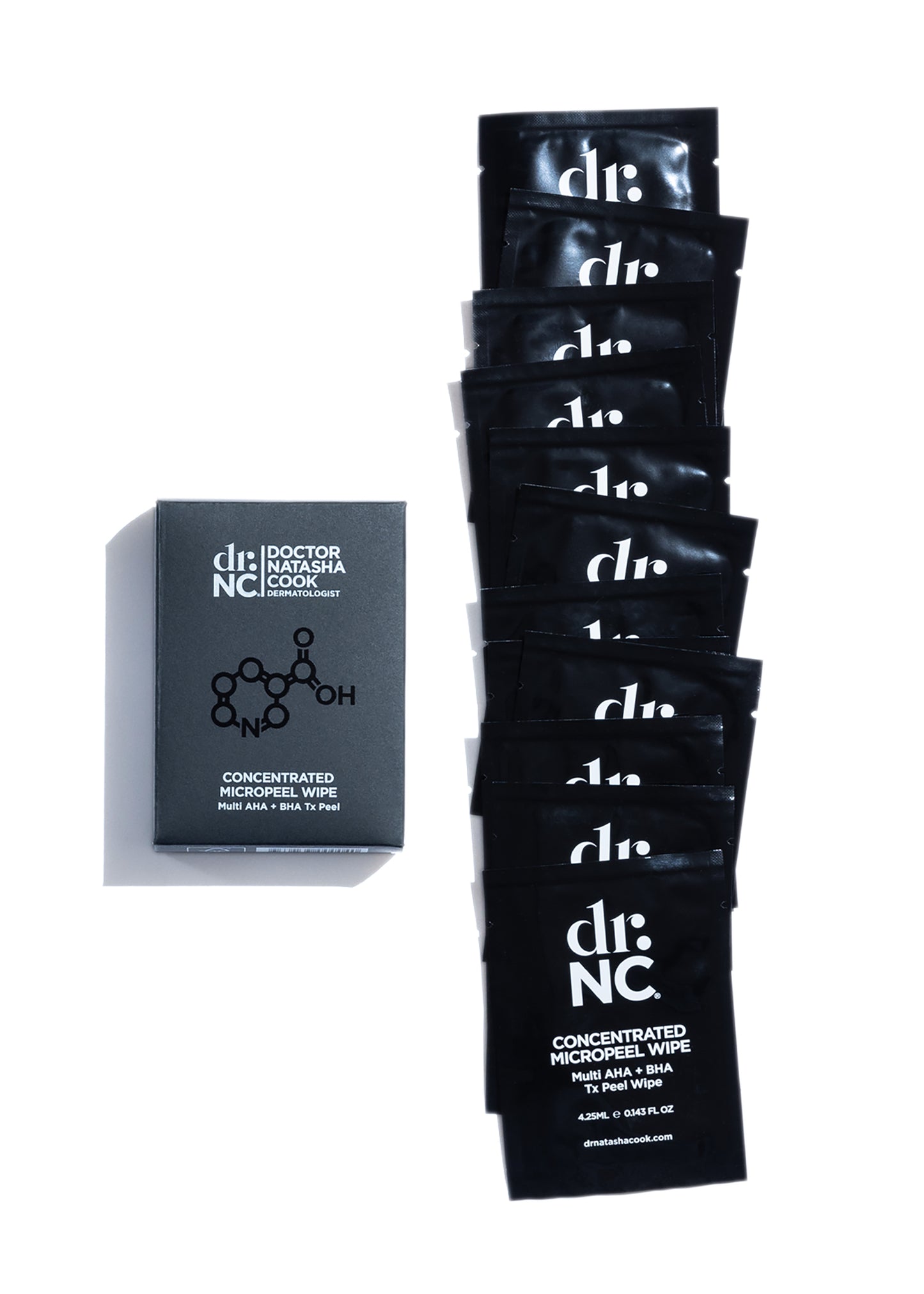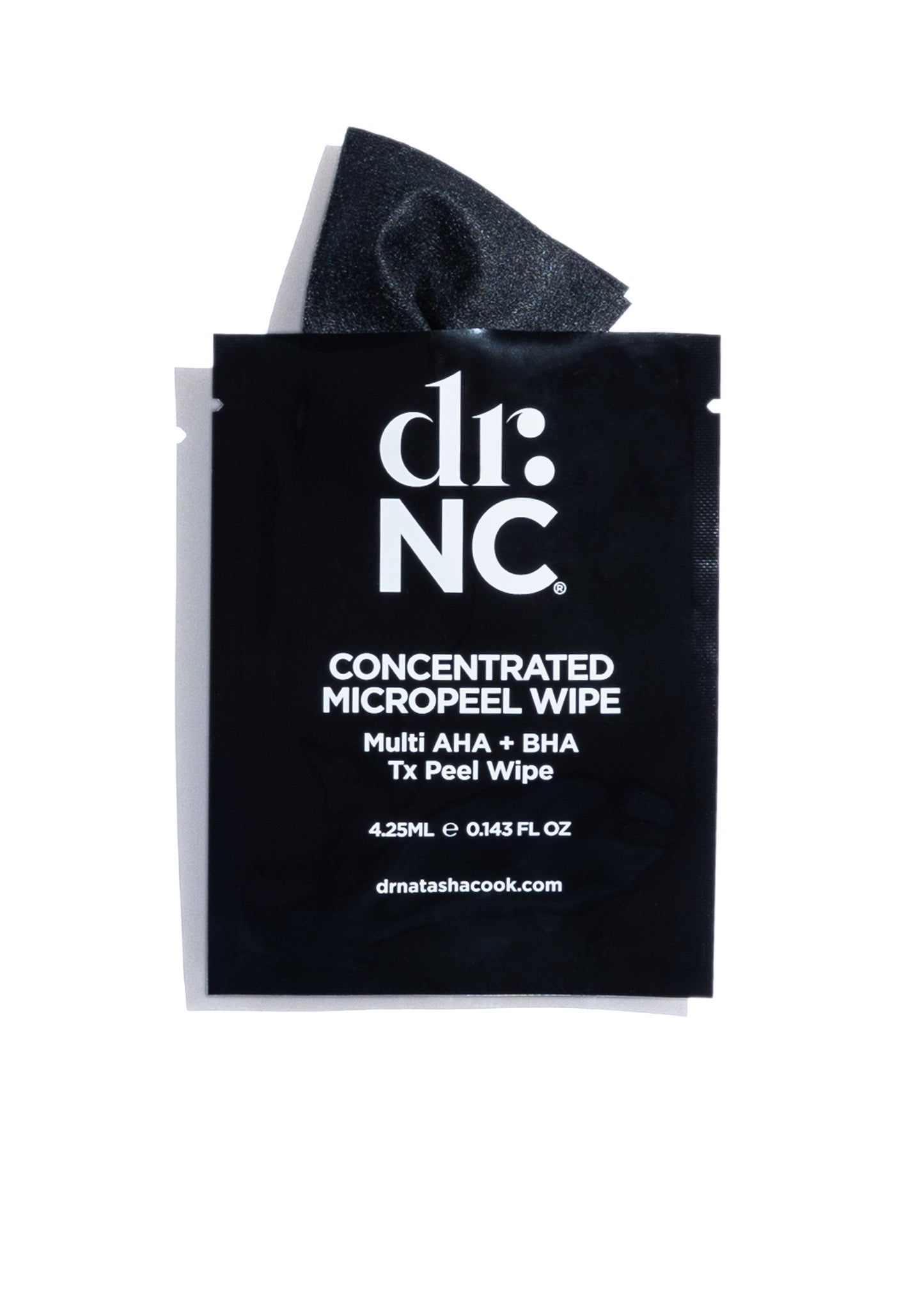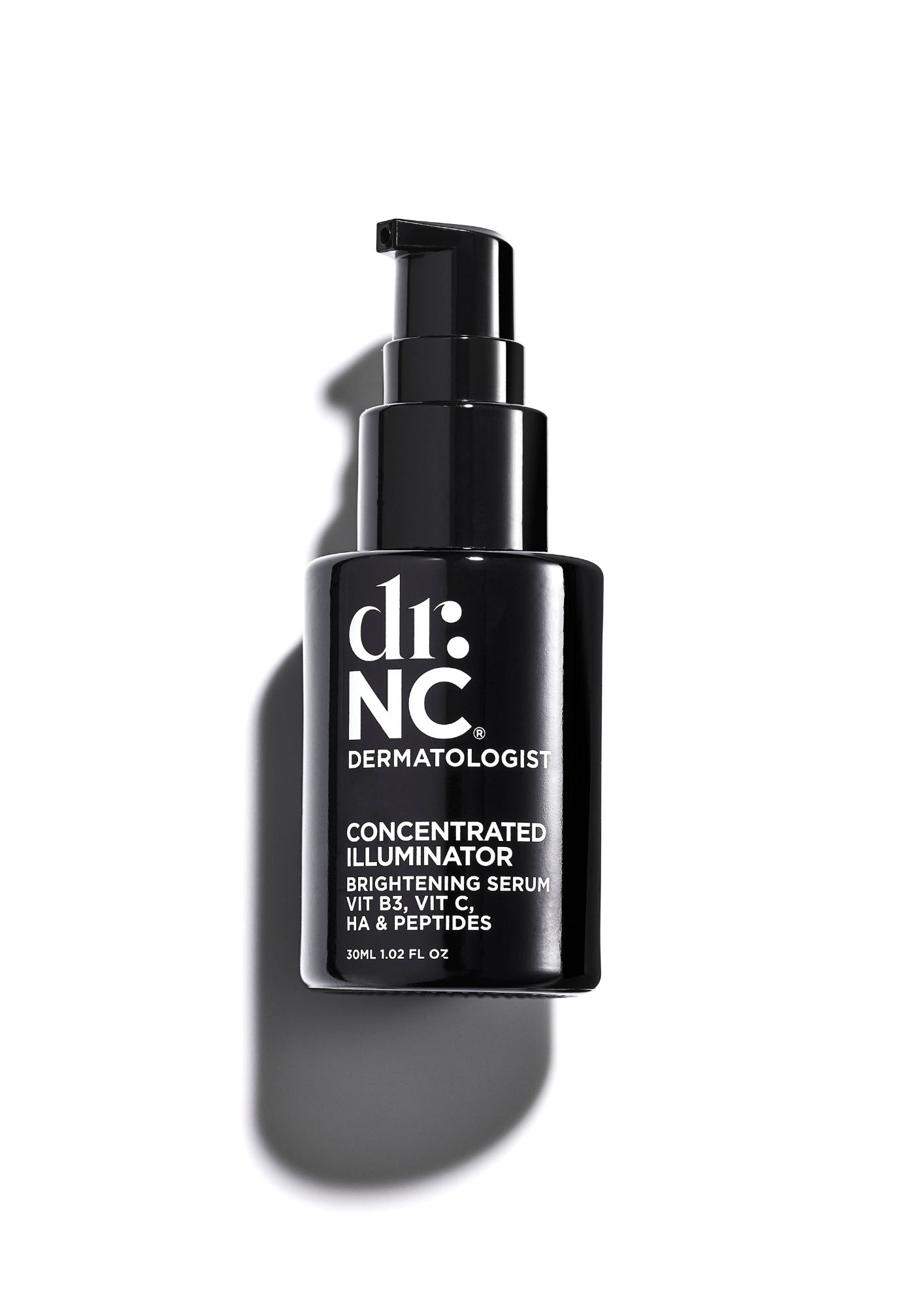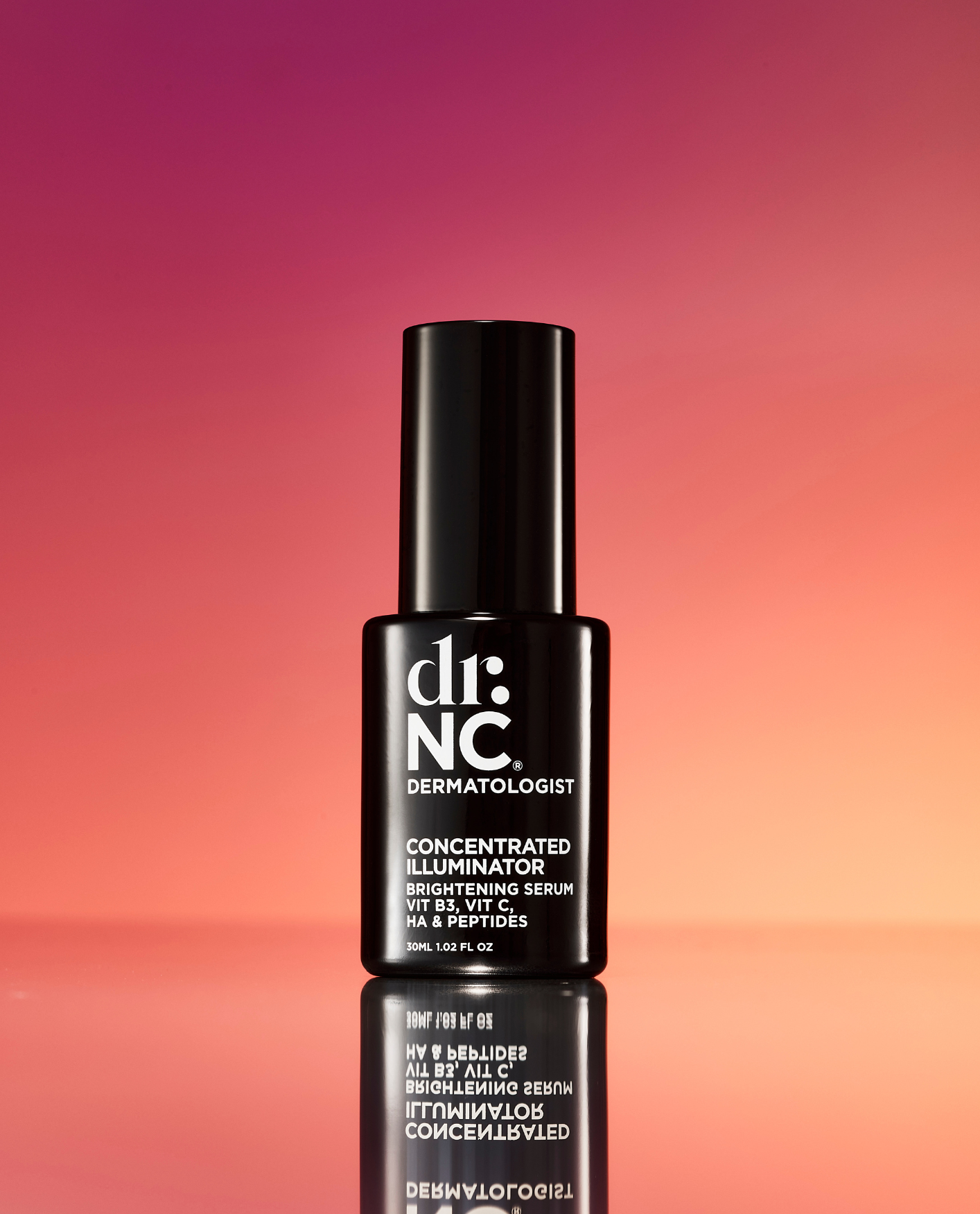
ONE OF THE MOST COMMON CONCERNS SHARED WITH DERMATOLOGISTS, DR COOK EXPLAINS WHAT’S CAUSING YOUR PIGMENTATION AND OFFERS FOUR EFFECTIVE AT-HOME TREATMENT OPTIONS.
When patients come to see me wanting to pause, if not reverse the signs of ageing, the conversation quickly turns to a particular skin concern that’s bothering them, often more than fine lines and wrinkles. Pigmentation has a far greater impact on that youthful skin quality so many people are chasing as nothing says fresh and youthful like a clear and even skin tone. Pigmentation is definitely the number one complaint I hear in my clinics, affecting around 80% of my patients, and it’s been one of the key concerns that has inspired much of my own skincare treatment range.
Unfortunately, thanks to our sunny climate and high UV levels, Australia is something of a breeding ground for pigmentation. Hyperpigmentation is essentially increased and excess pigment (also known as melanin) that’s visible in the skin. Produced by cells known as melanocytes, these cells live in the deeper parts of the epidermis and their job is to make pigment to protect the skin from damaging UV rays. While that sounds like a good thing, and it is in theory, the problem comes from years of accumulated sun exposure that starts kicking these cells into overdrive, producing excessive amounts of melanin which then clumps together and forms blotchy patches of freckles, sun spots (also known as lentigos), age spots, melasma and general hyperpigmentation. In short, it presents as an uneven skin tone and is a sign of premature ageing.
Here are some simple at-home strategies to treat and prevent pigmentation:
SPF IS YOUR SKIN’S BFF
Not only is the sun responsible for around 80% of skin ageing, but it’s also the biggest factor and fertiliser when it comes to skin pigmentation and uneven skin tone. Avoiding sun exposure altogether would be the best way to treat pigmentation but that’s not realistic — or recommended. In truth, most people unknowingly do the damage in the first 15 years of their life, but it can take decades to present itself on the skin and the damage is already done. On a positive note, you can prevent future damage by avoiding direct sun exposure and protecting your skin with the diligent use of sunscreen.
- SPF30 should be your minimum protection with SPF50 as the gold standard
- I prefer mineral over chemical sunscreens. Look for a combination of Zinc and Titanium Dioxide which is your best coverage against UVA and UVB exposure. [Don’t trust lightweight, Zinc-only formulations.]
- Look for sunscreens that are boosted with antioxidant and anti-inflammatory Vitamin B3 to combat the environmental damage that feeds ageing and pigmentation.
VITAMIN BOOST
UV exposure is a key source of inflammation in the skin. Helping the skin to fight the free-radical damage and repair against the trauma response caused by the impact of UVA and UVB is vital when it comes to managing pigmentation. Topical antioxidants like Vitamins B3 and C in active concentrations have been clinically proven to block pigment production.
YOUR DAILY AHA/BHA DOSE
Using active skincare ingredients containing AHAs and BHAs can help lift and remove the build-up of pigment that’s sitting on your skin and masking your natural radiance. Scientifically proven to exfoliate, stimulate Collagen and Elastin and boost cellular renewal, they are important ingredients in the treatment and prevention of pigmentation so make sure you incorporate an active AHA/BHA serum into your daily routine along with chemical peels to deeply exfoliate and give cellular renewal a nudge.
PIGMENTATION PRESCRIPTION (Hydroquinone concentration greater than 4% for efficacy): Hydroquinone / Kojic Acid
If your pigmentation presents as broad patches of discolouration, it’s probably melasma. The result of hormonal changes in the body, like pregnancy, melasma is a lot more stubborn to treat than pigmentation and some lasers can make it even worse. I’m a strong advocate of adding in a prescription of Hydroquinone and Kojic acid to use at night after your moisturiser. These are the gold standard of pigmentation enzyme blockers to help fade pigment and reclaim your even skin tone.
References:
- C.M. Ditre, T.D. Griffin, G.F. Murphy, et al.: Effects of α-hydroxy acids on photoaged skin: a pilot clinical, histologic, and ultrastructural study. J Am Acad Dermatol. 34 (2Pt1):187-195 1996 8642081
- https://pubmed.ncbi.nlm.nih.gov/8642081/

